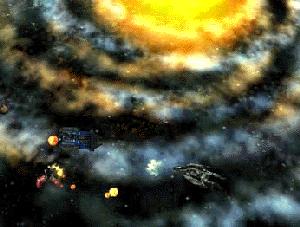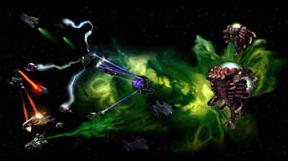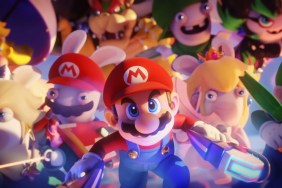The day we discovered that we weren’t alone…
The evidence was irrefutable. Man was no longer alone in the Universe. In fact,
the aliens have been around longer than mankind itself. There was much rejoicing
on planet Earth as the news spread. People thought that a new era of enlightenment
was upon us.
Joy
turned to fear, however, the day the Armada arrived. A swarm of ships
descended from the heavens, razing cities and decimating the population. Many
of those humans who survived the first wave of attack fled the planet in various
seeder ships. Some made it, most didn’t.
The survivors of the cataclysm settled on 6 different planets, hidden from
the Armada. Over the course of 10,000 years, each of the six groups continued
to evolve along vastly different paths. One thing was certain, the moment anyone
ventured into space again, the Armada was there to intercept them. Finally,
the six branches of humanity are once again in contact with each other and united
against the Armada. Will unity among the children of Earth be enough to
stop the onslaught? Or will the Armada succeed in removing humanity from
the universe entirely?
One of the best games I’ve ever played was called Escape
Velocity. Available only for the Macintosh, it successfully blended the
action of Asteroids with a complex universe like the one found in Privateer
2. Similarly, Armada blends the action of Asteroids (Well,
more like Sinistar) and RPG elements to bring you a game that, above
all else, is just a ton of fun to play.
Being one of the few two-dimensional Dreamcast games, many folks might be ready to dismiss the game’s graphics. While not stellar, the graphics fit the game to a tee. All the ships are polygonal, which allows them to tilt while turning and other little special effects. Space looks, well, like space, except the designers felt they need to put a strange fog everywhere in order to give the feeling of movement. While that would be fine in some places in the universe (like a nebula), having the fog everywhere is a little lame.
Once you pick which of the six races you wish to represent, each with their
own unique ships and initial powerups, you start your journey at Allied Command.
After you’ve talked to the residents of Allied Command, you’ll be given a mission
and sent into space. While the gameplay is similar to Asteroids, don’t
think it’ll be a walk in the park. There are over a hundred different Armada
ship types that are after you. At times, they seem relentless, at other times
calm. But you’d better stay on your toes and keep an eye on your armor.
Space is big. Yes, that’s an understatement, but it’s true. The same goes for
space in Armada. Allied Command is based at coordinates (0,0). From that
point, space extends out to coordinates (1,000,000, 1,000,000) in both positive
and negative directions. It takes a dedicated pilot to try to reach the end of
space . . . either that or someone with nothing better to do.
 The Armada
The Armada
have been hunting humanity for 10,000 years, so mankind had better develop new
technologies in order to fight back. This is where the RPG elements of the game
fit in. For every Armada ship you destroy, you gain an amount of experience equal
to a multiple of that Armada unit’s level. You also can pick through the wreckage
to find credits (money) as well.
There are two ways to increase the power of your spacecraft. Besides buying
upgrades for your ship (ie bigger guns, tougher armor) using the aforementioned
credits, you are rewarded a new ship for every 4 levels you gain. Different
combinations of upgrades work better depending on what race and what level you
are. Of course, as you get tougher, so does the Armada.
When the going gets tough, the tough get friends. That’s right it’s multiplayer.
Up to four players can play at the exact same time. Also, since Armada
saves game data and character data separately, players can take their favorite
characters over to their friend’s house and join their friend’s save game. If
only there had been a Star Control type melee option, the multiplayer would
have been perfect. As it stands, however, this is one of the best (and most addicting)
multiplayer games I’ve ever played.
As much fun as this game is, it still has some problems. These problems stem
not from what is included in the game, but from what isn’t. Allied Command is
the only ‘town’. Period. Sure there are other starbases, but those just act as
shops. This means that no matter how far you get in the game, it all still comes
back to the start. This lack of depth is further accented by the option to “return
home” at any time, allowing you to suddenly jump from wherever you are in the
universe back to Allied Command without a scratch. Now that’s a nice escape route.
Not that you really need it. Death doesn’t matter in Armada. Sure,
it keeps track of the number of deaths you have, but that number just doesn’t
matter as far as I can tell. That leads to another problem: No stats. When I get
a weapon upgrade, I want to see a power number change or something. There just
wasn’t enough detail.
Same goes for the missions. All the missions are either deliver product from
point A to point B or kill a specific Armada ship (Generally named something
like clawkiller, deathbringer, doomcannon, etc.). Though the NPC’s talk about
communicating with the Armada, it just doesn’t happen. It seems that
they planned more depth to the game, but released it early before they were
done. While it doesn’t ruin the game the way Legacy
of Kain: Soul Reaver was ruined, it’s annoying that these details weren’t
fleshed out.
So, the Armada is threatening the existence of humanity . . . should you help?
The answer is a resounding YES. Although it does have its fair share of problems,
the pluses far outweigh the minuses. Play it alone or, even better, invite a
few friends over and save the universe with the ones you love. Just remember
to keep track of the time, this game sucks you in.

-
Good Gameplay
-
Addictive
-
Great Multiplayer
-
Not Enough Depth










